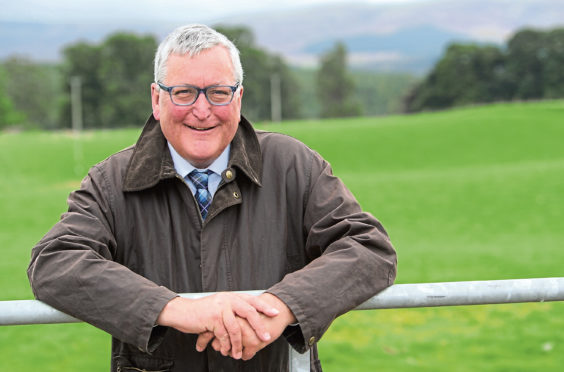The first tranche of the long-awaited European convergence cash will be distributed to active farmers via a complex formula, the detail of which is still being worked out by the Scottish Government.
The initial £80 million being released by Westminster will be paid by March, but it will be several weeks before the industry finds out how individual payments have been calculated.
The Scottish Government is allocating £26 million of the £80 million to Region 1, £18.2 million to Region 2 and £7.8 million to Region 3.
There will also be top-ups to the voluntary coupled beef and sheep schemes amounting to £15 million.
Farmers will not have to apply for the funds and they will receive a detailed statement explaining how their payment has been calculated.
Rural Economy Secretary Fergus Ewing told a briefing at Holyrood that he was conscious no system he could devise would be universally popular, but he insisted his plan would meet the original principles of convergence which were to bring the per capita support payment in Scotland closer to the EU average.
He added that all farmers should gain some advantage from the cash.
“I am confident we’ve got the best outcome, but it is very complicated,” he said.
However Mr Ewing’s plan to use convergence money to top up Less Favoured Areas Support Scheme (LFASS) monies to 100% over the next two years by using £13 million of the cash this year, and £46 million next year, was condemned by NFU Scotland (NFUS), which also criticised the decision to diverge markedly from the union’s own proposals.
NFUS president Andrew McCornick said the weightings proposed by government to the regional rate top-ups did not accurately reflect the contribution of all land in Region 1.
Mr McCornick said: “As well as highly-productive arable land, most of the Region 1 land is grassland and more support here would, in turn, have better supported all our vulnerable livestock sectors.
“Unfortunately, the approach the Scottish Government intends to take will immediately lower what all three regional payments could have been and that will have a significant impact on all sectors, especially those underpinned by Region 1 permanent pastures and grassland.”
Mr Ewing pointed out the union’s plan had not met with universal approval, and he said he had received “a lot of strongly-worded letters from individual farmers and crofters who feel the NFUS proposals don’t meet the principles I’ve set out”.
Mr Ewing also said that he would be speaking to the banks and reassuring them that customers would be getting extra income.
“Hopefully that will encourage them to take some farmers off their watch list,” he said.










